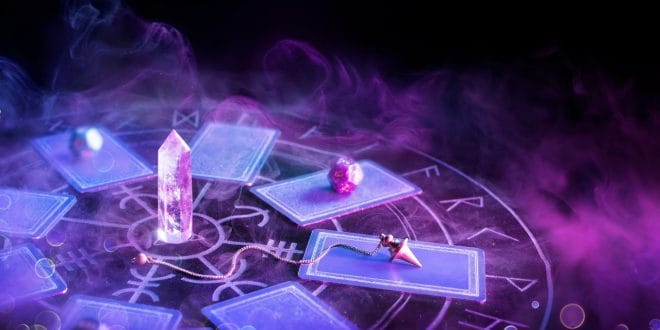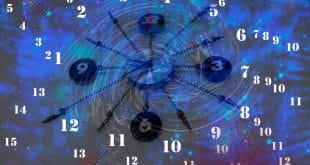Tarot has fascinated people for centuries, offering guidance, insight, and self-reflection through a deck of mystical cards. Whether you’ve seen tarot readings in movies, heard about them from friends, or are simply curious about their meaning, you might be wondering: What is tarot, and how does it actually work?
In this guide, I’ll break down the basics of tarot, including its history, how it’s used, and how you can get started on your own tarot journey. Whether you’re interested in spiritual growth, decision-making, or exploring your intuition, tarot can be a powerful tool.
What Is Tarot?
At its core, tarot is a deck of 78 cards used to gain insight into your life. Each card is filled with symbolism, imagery, and archetypes that reflect different aspects of the human experience. Tarot cards can help you explore your thoughts, feelings, and challenges by offering new perspectives and guiding you to find answers within yourself.
The tarot deck is divided into two main sections:
- Major Arcana – 22 cards representing significant life themes or spiritual lessons.
- Minor Arcana – 56 cards that focus on daily events, challenges, and emotions, divided into four suits.
Each tarot reading is unique, depending on the questions asked and the cards drawn.
A Brief History of Tarot
The exact origins of tarot are debated, but many historians believe it began in 15th-century Europe as a card game called “tarocchi.” Over time, tarot evolved into a tool for divination and spiritual exploration, especially during the 18th and 19th centuries, when mystics and occult scholars began to assign deeper meanings to the cards.
Today, tarot is widely used around the world for self-reflection, spiritual guidance, and even creative inspiration.
How Does Tarot Work?
Tarot works by tapping into your intuition and the collective unconscious—a concept popularized by psychologist Carl Jung. When you shuffle and draw tarot cards, it’s believed that your subconscious mind influences which cards appear, creating a reflection of your current thoughts, emotions, and life situation.
However, tarot is not about predicting the future with absolute certainty. Instead, it offers guidance, symbolic insights, and potential outcomes to help you make more informed decisions.
The Structure of a Tarot Deck
A typical tarot deck contains 78 cards, each with a unique meaning. Understanding the structure of the deck is essential for accurate readings.
1. Major Arcana (22 Cards)
The Major Arcana represents life’s big moments and spiritual lessons. These cards often signify turning points, life-changing decisions, or deep introspection.
Some well-known Major Arcana cards include:
- The Fool (New beginnings, taking risks)
- The Lovers (Relationships, choices, balance)
- The Tower (Sudden change, upheaval)
- The World (Completion, fulfillment, achievement)
When a Major Arcana card appears in a reading, it usually highlights an important life event or theme that requires attention.
2. Minor Arcana (56 Cards)
The Minor Arcana deals with everyday situations and practical matters. These cards are divided into four suits, similar to playing cards, each representing a different area of life.
- Wands (Fire element): Creativity, ambition, action
- Cups (Water element): Emotions, relationships, intuition
- Swords (Air element): Thoughts, communication, challenges
- Pentacles (Earth element): Finances, career, material stability
Each suit contains 14 cards: numbers 1 (Ace) through 10, plus four court cards (Page, Knight, Queen, King).
Example: If you draw the Ace of Wands, it may signify a new creative project or opportunity. If you draw the Three of Swords, it might indicate emotional pain or heartbreak.
What Are Tarot Readings?
A tarot reading involves drawing cards and interpreting their meanings in the context of your question or situation. Tarot readers often use spreads, which are pre-arranged layouts of cards that provide structure to the reading.
Common Tarot Spreads:
- One-Card Reading: Perfect for quick, daily guidance or simple questions.
- Three-Card Spread: Typically used to explore past, present, and future influences.
- Celtic Cross Spread: A more detailed 10-card layout offering deep insights into complex issues.
During a reading, the tarot reader (or you, if you’re reading for yourself) will interpret the cards based on their symbolism, positions in the spread, and your intuition.
Example: If you’re feeling stuck in your career, a three-card spread might reveal past patterns (e.g., fear of change), your current mindset (e.g., lack of clarity), and potential next steps (e.g., pursuing a new opportunity).
Can Anyone Learn to Read Tarot?
Yes! Tarot is accessible to anyone willing to learn. You don’t need to be psychic or have special abilities to read tarot effectively. Instead, tarot relies on practice, intuition, and personal connection with the cards.
Here’s how you can get started:
1. Choose a Deck
Select a tarot deck that resonates with you. The Rider-Waite Tarot is one of the most popular beginner-friendly decks due to its clear, symbolic imagery. Other options include the Modern Witch Tarot and Wild Unknown Tarot.
2. Study the Card Meanings
Spend time getting familiar with the symbolism and interpretations of each card. Many tarot decks come with guidebooks to help you understand the cards.
Tip: Journaling your thoughts and feelings about each card can deepen your understanding over time.
3. Practice with Simple Spreads
Start with easy spreads like the one-card or three-card reading. Reflect on how the cards relate to your question and trust your intuition during interpretation.
4. Develop Your Intuition
Tarot is as much about inner knowing as it is about traditional meanings. Pay attention to your first impressions, emotions, and any intuitive insights you receive when looking at the cards.
What Questions Can Tarot Help Answer?
Tarot can be used to explore a wide range of topics, including:
- Self-discovery: What can I do to grow and evolve?
- Relationships: How can I improve my relationship with [person]?
- Career and goals: What opportunities should I focus on next?
- Life challenges: What lesson am I meant to learn from this situation?
Example: If you’re unsure about a major life decision, tarot can provide symbolic clues and potential outcomes to help you make a more confident choice.
Tip: Tarot works best with open-ended questions rather than “yes” or “no” questions. For example, instead of asking, “Will I get this job?” try asking, “What can I do to increase my chances of success?”
Debunking Common Myths About Tarot
There are many misconceptions about tarot. Let’s clear up a few:
- Tarot doesn’t predict a fixed future. It provides insights and possibilities but doesn’t determine your fate.
- Tarot isn’t inherently “magical” or “evil.” It’s a tool for reflection and personal growth.
- You don’t have to be psychic to read tarot. Anyone can develop their intuition and learn to interpret the cards.
Tarot is a powerful tool for self-discovery, guidance, and empowerment. By exploring the cards’ meanings and trusting your intuition, you can gain deeper insights into your life’s path and challenges. Whether you’re a complete beginner or someone looking to expand your spiritual practice, tarot invites you to connect with your inner wisdom and navigate life’s complexities with greater clarity.
Are you ready to start your tarot journey? Pick up a deck and let the cards guide you!
 Lifeved The Keys to a Better
Lifeved The Keys to a Better



 by
by